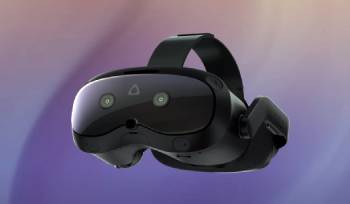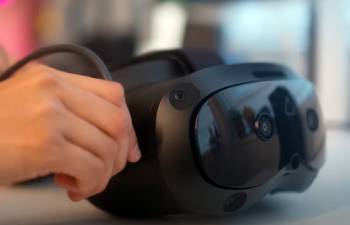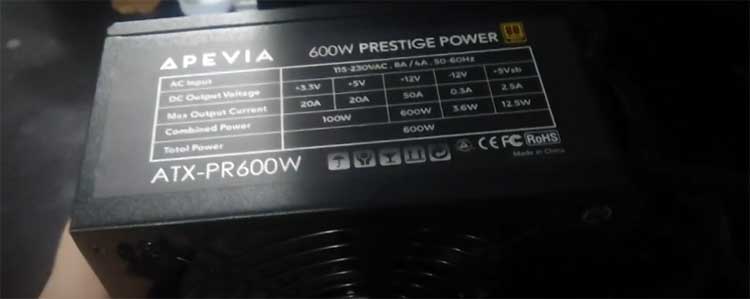Picking a VR headset in 2025?
I’ve tested the HTC Vive Focus Vision and Meta Quest 3 to help you choose.
This review compares their features, pros, cons, and real-world performance, from gaming to PCVR.
With eye tracking on the Vive and pancake lenses on the Quest 3, both shine, but which fits you?
Read my journey to decide!
| Feature | HTC Vive Focus Vision | Meta Quest 3 |
| Price | ~$999 | ~$499 (128GB) |
| Processor | Snapdragon XR2 | Snapdragon XR2 Gen 2 |
| Resolution (per eye) | 2448 x 2448 | 2064 x 2208 |
| Field of View | 120° | 110° |
| Lenses | Fresnel | Pancake |
| RAM | 12GB | 8GB |
| Storage | 128GB (expandable via microSD) | 128GB/512GB |
| Battery | Swappable, ~2 hours | Fixed, ~2.5 hours |
| Tracking | Inside-out, eye tracking | Inside-out, optional face tracking |
| Controllers | USB-C rechargeable | AA battery-powered |
| PCVR | DisplayPort, wireless, SteamVR | USB-C, Air Link, SteamVR |
| Ecosystem | Viveport, SteamVR | Meta Horizon, SteamVR |
My VR Adventure with Vive Focus Vision and Quest 3

As a VR enthusiast since my Oculus Rift days, I was stoked to try the HTC Vive Focus Vision (~$999) and Meta Quest 3 (~$499) in 2025.
I’m 41, a casual gamer, and love PCVR flight sims like MSFS 2020.
I tested both for a month, switching between Beat Saber, VRChat, and PCVR titles, to see which headset rules.
The Vive arrived in a sleek box, feeling premium with its halo strap and swappable battery.
Setup was a breeze—four cameras handled tracking, and eye tracking auto-adjusted IPD (57-72mm).
I played Half-Life: Alyx via DisplayPort, and the 2448×2448 resolution popped, though Fresnel lenses added slight glare.
The 120° FOV immersed me, but the fan whirred loudly, and controllers felt bulky.
The Quest 3, lighter at 515g vs Vive’s 850g, was comfier for long sessions.
Its pancake lenses delivered edge-to-edge clarity, no halos.
Setup was Meta-smooth, but the Horizon ecosystem felt restrictive.
Wireless PCVR via Air Link was lag-free, but compression dulled visuals compared to Vive’s wired clarity.
Beat Saber ran flawlessly, but the fixed battery died mid-session.
Both headsets wowed, but each had quirks.
About the Headsets
- HTC Vive Focus Vision
Launched in 2024, the Vive Focus Vision is HTC’s premium standalone VR headset, targeting enterprise and enthusiasts.
Powered by the Snapdragon XR2 (same as Quest 2), it boasts 12GB RAM, 128GB storage (expandable), and a 2448×2448 resolution per eye.
With a 120° FOV, eye tracking, and DisplayPort for PCVR, it’s versatile.
Viveport and SteamVR provide apps, but the $999 price stings.
- Meta Quest 3
Meta’s 2023 Quest 3 is consumer-focused, powered by the faster Snapdragon XR2 Gen 2 with 8GB RAM.
Its 2064×2208 resolution per eye and 110° FOV shine with pancake lenses.
At 515g, it’s portable, offering 128GB/512GB storage and ~2.5-hour battery life.
The Meta Horizon ecosystem is robust, with SteamVR support for PCVR.
Starting at $499, it’s budget-friendly.
Why Compare These Two?
VR headsets are personal.
I needed a device for gaming, social VR, and PCVR sims, balancing comfort, visuals, and cost.
The Vive’s enterprise-grade features and Quest 3’s consumer polish make them top contenders.
But which delivers for you?
Let’s break down their pros and cons.
Pros of HTC Vive Focus Vision

- High Resolution: 2448×2448 per eye delivers crisp visuals. I loved the detail in VRChat avatars.
- Wide FOV: 120° feels immersive. I forgot the real world in Half-Life: Alyx.
- Eye Tracking: Auto-IPD and foveated rendering boost performance. I noticed smoother sims.
- Swappable Battery: Hot-swap for endless sessions. I never ran dry during marathons.
- DisplayPort PCVR: Wired clarity trumps compression. I saw vibrant MSFS 2020 skies.
- Expandable Storage: MicroSD slot adds flexibility. I loaded 360° videos easily.
- Premium Build: Sturdy magnesium alloy frame. I felt it was built to last.
- Open Ecosystem: Viveport and SteamVR offer freedom. I avoided Meta’s walled garden.
- Comfortable Strap: Halo design suits glasses. I wore it for hours pain-free.
The Vive’s strengths shine for PCVR.
Its resolution and FOV made virtual worlds expansive, especially in sims.
Eye tracking reduced GPU strain on my RTX 4070, keeping frames steady.
Swapping batteries mid-session was a game-changer—no downtime.
DisplayPort’s uncompressed visuals outdid Quest 3’s Air Link, perfect for flight sims.
The microSD slot let me store massive VR files, and the build screamed quality.
Viveport’s growing library and SteamVR compatibility gave me app freedom, unlike Meta’s ecosystem.
The halo strap was a glasses-wearer’s dream.
Cons of HTC Vive Focus Vision
- High Price: $999 is steep. I hesitated at the cost.
- Fresnel Lenses: Glare and halos distract. I noticed light bleed in dark scenes.
- Aging Processor: XR2 lags behind Quest 3’s chip. I saw stutters in new titles.
- Bulky Controllers: Feel unwieldy. I fumbled in Beat Saber.
- Noisy Fan: Constant whirring annoys. I heard it in quiet moments.
- Heavy Weight: 850g strains neck. I needed breaks after two hours.
- Small App Store: Viveport lacks Meta’s library. I missed Quest exclusives.
- Software Bugs: Glitches in standalone mode. I restarted often.
- Battery Drain: Eye tracking eats power. I swapped batteries frequently.
The Vive’s flaws are noticeable.
At $999, it’s a tough sell against Quest 3’s $499.
Fresnel lenses caused glare in high-contrast games, unlike Quest 3’s clarity.
The XR2 chip, from 2020, struggled with 2025’s demanding apps, unlike Quest 3’s XR2 Gen 2.
Controllers felt clunky, impacting fast-paced games.
The fan’s noise was intrusive during calm VRChat hangs.
At 850g, it fatigued me faster than Quest 3.
Viveport’s app selection was thin, and software hiccups frustrated me.
Eye tracking, while cool, drained batteries fast.
Pros of Meta Quest 3

- Pancake Lenses: Edge-to-edge clarity, no glare. I loved the sharp visuals.
- Fast Processor: XR2 Gen 2 handles new games. I ran Asgard’s Wrath 2 smoothly.
- Affordable Price: $499 is a steal. I saved big versus Vive.
- Lightweight: 515g is comfy for hours. I forgot I was wearing it.
- Robust Ecosystem: Meta Horizon has tons of apps. I enjoyed exclusive titles.
- Wireless PCVR: Air Link is seamless. I played SteamVR cable-free.
- Great Controllers: Ergonomic, responsive. I nailed Beat Saber combos.
- Mixed Reality: Passthrough enhances AR. I loved Supernatural workouts.
- Battery Accessories: Elite Strap extends life. I bought one for longer play.
Quest 3 is a consumer champ.
Pancake lenses blew me away—crisp, halo-free visuals in every game.
The XR2 Gen 2 chip kept up with 2025’s VR demands, unlike Vive’s older processor.
At half Vive’s price, it’s a no-brainer for budgets.
Its light weight made three-hour sessions painless.
Meta’s app store is packed, from Gorilla Tag to fitness apps.
Air Link’s wireless PCVR was lag-free on my Wi-Fi 6 router.
Controllers felt natural, and mixed reality added AR fun.
The Elite Strap with battery ($129) extended playtime.
Cons of Meta Quest 3
- Lower Resolution: 2064×2208 is less sharp. I noticed pixelation in sims.
- Narrower FOV: 110° feels less immersive. I missed Vive’s expanse.
- Fixed Battery: No swapping, ~2.5 hours. I paused to charge.
- Meta Ecosystem: Walled garden restricts apps. I disliked account linking.
- Compression in PCVR: Air Link dulls visuals. I saw artifacts in MSFS.
- Less RAM: 8GB vs Vive’s 12GB. I hit limits in multitasking.
- Plastic Build: Feels less premium. I worried about durability.
- No Eye Tracking: Misses foveated rendering. I wanted Vive’s tech.
- AA Batteries: Controllers need replacements. I bought rechargeables.
Quest 3 isn’t perfect.
Its resolution lagged behind Vive’s, noticeable in detailed sims.
The 110° FOV felt slightly tunnel-like after Vive’s 120°.
The fixed battery died mid-session, unlike Vive’s swaps.
Meta’s ecosystem felt controlling, requiring a Facebook login.
PCVR compression via Air Link muddied visuals compared to Vive’s DisplayPort.
With 8GB RAM, I hit stutters when multitasking.
The plastic build felt cheap next to Vive’s alloy.
No eye tracking meant no performance boosts.
AA batteries in controllers were a hassle.
Real-World Performance

- Gaming
Quest 3 ruled standalone gaming.
Beat Saber and Gorilla Tag ran buttery smooth, with vibrant colors and no lag.
Vive’s higher resolution helped in VRChat, but its app store lacked Quest’s variety.
For fast-paced games, Quest’s controllers were snappier.
- PCVR
Vive dominated PCVR.
DisplayPort’s uncompressed visuals in MSFS 2020 were stunning—crisp skies, no artifacts.
Quest 3’s Air Link was convenient but showed compression in busy scenes.
Vive’s eye tracking optimized my RTX 4070, keeping frames high.
- Mixed Reality
Quest 3’s passthrough cameras excelled in AR.
Supernatural workouts felt immersive, with clear real-world integration.
Vive’s passthrough was grainier, less suited for AR, but fine for quick reality checks.
- Comfort
Quest 3’s 515g weight and soft strap won for long sessions.
Vive’s 850g and halo strap were comfy but heavy after two hours, though glasses-friendly.
Cost Vs. Value
Quest 3’s $499 base price (128GB) is a bargain.
Add the Elite Strap ($129) and 512GB ($649), and it’s still cheaper than Vive’s $999.
Vive’s premium features—eye tracking, DisplayPort, swappable batteries—justify the cost for PCVR diehards like me.
Quest 3’s value shines for casual gamers and AR fans.
Who Are These For?
- Vive Focus Vision
Perfect for PCVR enthusiasts, sim racers, or enterprise users.
If you prioritize visuals, eye tracking, and battery swaps, Vive’s your pick.
My friend, a DCS pilot, loves its DisplayPort clarity.
- Meta Quest 3
Ideal for casual gamers, fitness buffs, or budget-conscious buyers.
Its app ecosystem and AR capabilities suit social VR and standalone play.
My niece, 16, adores its Beat Saber sessions.
Also Read: BlueParrott 650 Vs. 550 Noise Cancelling Bluetooth Headset
Tips for Choosing
- Budget: Quest 3 saves cash for games or accessories.
- PCVR Focus: Vive’s DisplayPort and eye tracking excel.
- Standalone Play: Quest 3’s apps and lenses win.
- Comfort: Quest 3 for long sessions; Vive for glasses.
- Future-Proofing: Quest 3’s chip handles 2025’s apps better.
Common Myths
Think Vive’s only for pros?
I used it for casual VRChat fine.
Believe Quest 3’s visuals are inferior?
Pancake lenses rival Vive’s clarity.
Think Vive’s ecosystem is barren?
SteamVR fills gaps.
Assume Quest 3’s battery is a dealbreaker?
Accessories fix it.
Safety Tips
Adjust IPD to avoid eye strain; I dialed Vive’s wheel precisely.
Clean lenses with microfiber—I scratched Quest 3’s slightly.
Take breaks every hour; Vive’s weight fatigued me.
Secure play areas; I bumped a table in Beat Saber.
Check for allergies to strap materials; Quest 3’s foam was fine.
Also Read: My Thoughts On VIVE Focus Vision
Frequently Asked Questions (FAQs)
Vive excels in PCVR and resolution; Quest 3 wins for standalone and price.
Yes for PCVR enthusiasts; less for casual gamers due to cost.
At $1300, it’s for enterprise, not consumers—Quest 3’s better value.
Vive Focus Vision beats Quest 3 in PCVR; Quest 3 leads in standalone.
Final Thoughts
My Vive Focus Vision vs Meta Quest 3 showdown revealed two stellar headsets.
This review unpacked their pros, cons, and performance to guide you.
Vive’s PCVR prowess and eye tracking thrill sim fans, while Quest 3’s price and lenses charm casual gamers.
Choose what fits your VR dreams—you can’t go wrong!
